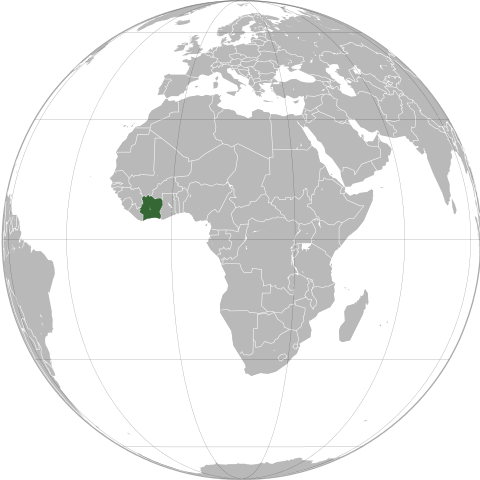We just learned about the African country of Cameroon.
Another African country is Ivory Coast.
The Ivory Coast is a country on the West coast of Africa, right on the Atlantic Ocean.

(from: wikipedia - ivory coast)
The flag of the Ivory Coast is three vertical stripes. Orange for the land, white for peace, and green for hope and the forest.
This flag is interesting, because it is just like the flag of Ireland, except Irelands is green-white-orange instead of orange-white-green.

(from: wikipedia - flag of ivory coast)
To eat in the Ivory Coast, you might have yassa, which is a spicy food cooked with onions and lemons.

(from: wikipedia - yassa (food))
The Basilica of Our Lady of Peace is a huge church in the town of Yamoussoukro.

(from: wikipedia - basilica of our lady of peace of yamoussoukro)
The Ivory Coast was given it's name because they used to sell lots of ivory there. Ivory is made from the tusks of elephants and other animals.
In the past many things were made from ivory, like piano keys. We now have new ways to make piano keys, and we know that killing elephants for their tusks is wrong, so it is against the law to kill elephants for their tusks.

(from: wikipedia - elephant)
Kid Facts - Blast from the past: Norway




